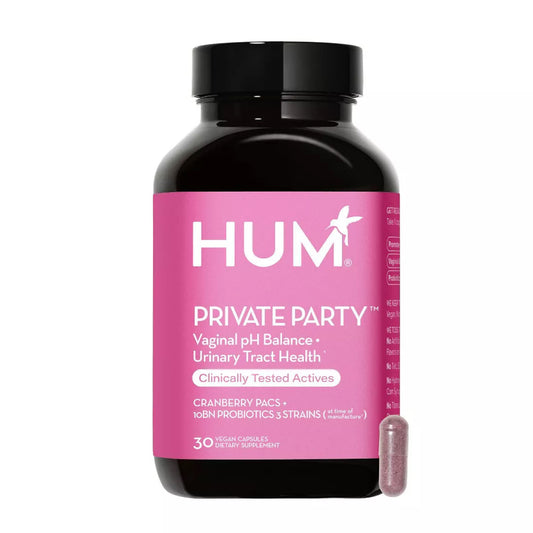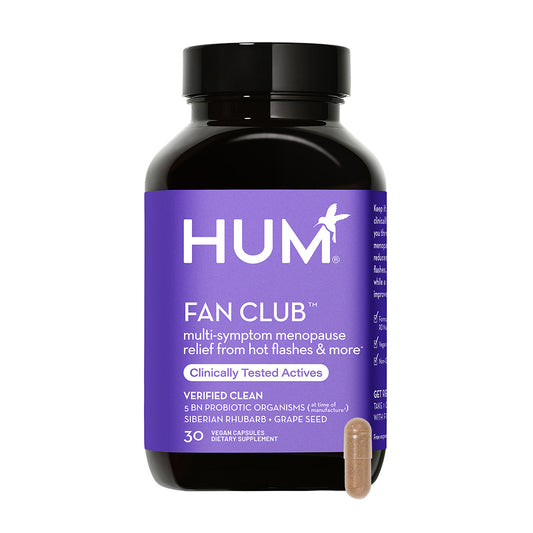When it comes to sex during menopause, even when our head is saying “yes, yes, yes”, our vagina may be saying “no, no, no”. And we all know the probable cause: estrogen. Or rather, the lack of it. Because as we lose estrogen, we also lose vaginal moisture, lubrication, and elasticity. The vagina may also become tighter around the opening, causing pain, burning, and soreness.
Plus (yes, there’s more) it’s also common for people who are perimenopausal or menopausal to develop atrophic vaginitis, where inflammation and irritation of the vagina can cause penetration to be really painful, and some people experience tearing and bleeding. Is it any wonder so many of us who are going through “the change” lose our enthusiasm for sex? (Hint: There are other reasons, but that’s the topic for another article).
The good news is there are things that can help us get our sex lives back where we want them — whatever that looks like for you. One effective approach is the vibrator.
While the word alone might illicit a shy giggle for some, make no mistake, a vibrator is a great tool that may help people with sexual challenges, including those going through menopause. And technology and design have come a long way, designing more specifically for female anatomy and pleasure, and including technology capabilities like Bluetooth®.

Vibrators help promote arousal, which then increases blood flow to the genital area and help increase lubrication and reduce tension and discomfort by relaxing the pelvic floor. If orgasm is a goal of yours, a vibrator (because it pulses and vibrates) can help with reaching an orgasm and clitoral stimulation. This is especially important, as only 18% of females can orgasm through penetration alone.
Only 18% of women can orgasm through penetration alone.
As we age, the need for vibration as part of arousal and orgasm becomes more necessary. When the vaginal lining is more lubricated, sex can become a lot more pleasurable.
Tips for talking to your partner about vibrators
While you may have used a vibrator on your own (more than half of us have!), how do you introduce it into your bedroom with your partner? Whether you’re in a newer relationship, or have been together for years, introducing the use of a vibrator may bring up some uncomfortable feelings for your partner. So, to help eliminate any misunderstandings, here are a few tips:
- Consider your timing. It might seem counterintuitive, but it can be much easier to talk about sex when you’re not being sexual. Both parties may be in a different mental or emotional state before, during, or after sex and that’s not the best time to bring some changes. In addition, instead of launching into the conversation, ask when a good time for them would be to chat about this. Find a time of day when you’re both sitting down and relaxing — maybe having your coffee in the morning or relaxing after dinner.
- Introduce the conversation before you introduce a new sex toy. Let them know about the changes your body is going through and how you think a vibrator could help. It may help to keep the conversation focused what you want to add to your sex life, rather than on anything that might be missing. At the end of the day (or the romantic evening), it’s not only about getting closer to orgasm but also getting closer to each other.
- Do the research, together online or even in-store. Before long, you’ll probably find yourself having fun not just thinking about your own needs but your partner’s, too. And along the way, you’ll learn more about each other's desires. Plus, all this talk about sex toys can help diffuse any awkwardness that may happen when they appear in your bedroom. In addition, there are so many different types of vibrators that you can have fun figuring out which ones will work best for both of you.

- Get to know your vibrator, alone. The more comfortable you are with how it works — and works best for you — the more comfortable you’ll be using it with your partner. Play with settings, explore your body, and learn how to care for, clean, and store it.
- Find your groove. It’s possible that it’s been a while since the two of you have changed things up in the bedroom. So, just as you’re getting used to some of the changes that are happening with your body, it’s important to take time with any changes happening in your sexual relationship too. For this reason, it might be a good idea to start slow and simple. Keep communicating with your partner about you’re feeling, what feels good, and which direction you’d like your sexual relationship to take.
In addition to vibrators, many people also enjoy trying different types of lube as they explore this new phase with their partner. Just be sure to use a lube that is safe for use with whatever material your vibrator is made of. Be sure to read and follow the product label for the vibrator and any lube you choose to use.
With so many different options out there for you and your partner to explore, there’s no excuse for menopause to keep you from experiencing better-than-ever sex.
References
Herbenick, D., Fu, T-S.J., Arter, J., Sanders, S.A., & Dodge, B. (2018). Women’s experiences with gential touching, sexual pleasure, and orgasm: Results from a U.S. probability sample of women ages 18 to 94. Journal of Sex & Marital Therapy, 44(2): 201-212. doi: 10.1080/0092623X.2017.1346530.
Herbenick, D., Reece, M., Sanders, S., Dodoge, B., Ghassemi, A., & Fortenberry, J.D. (2009). Prevalence and characteristics of vibrator use by women in the United States: Results from a nationally representative study. The Journal of Sexual Medicine, 6(7): 1857-66. doi: 10.1111/j.1743-6109.2009.01318.x.
Rullo, J.E., Lorenz, T., Ziegelmann, M.J., Meihofer, L., Herbenick, D., & Faubion, S.S. (2018). Genital vibration for sexual function and enhancement: Best practice recommendations for choosing and safely using a vibrator. Sexual and Relationship Therapy, 33(3): 275-285. doi: 10.1080/14681994.2017.1419558
The Menopause Society. Menopause topics: Sexual health. Accessed 10/30/2024 from https://menopause.org/patient-education/menopause-topics/sexual-health





